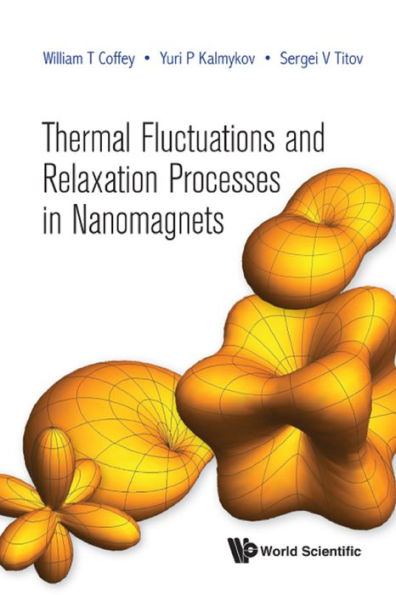Presenting in a coherent and accessible fashion current results in nanomagnetism, this book constitutes a comprehensive, rigorous and readable account, from first principles of the classical and quantum theories underlying the dynamics of magnetic nanoparticles subject to thermal fluctuations.Starting with the Larmor-like equation for a giant spin, both the stochastic (Langevin) equation of motion of the magnetization and the associated evolution (Fokker-Planck) equation for the distribution function of the magnetization orientations of ferromagnetic nanoparticles (classical spins) in a heat bath are developed along with their solution (using angular momentum theory) for arbitrary magnetocrystalline-Zeeman energy. Thus, observables such as the magnetization reversal time, relaxation functions, dynamic susceptibilities, etc. are calculated and compared with the predictions of classical escape rate theory including in the most general case spin-torque-transfer. Regarding quantum effects, which are based on the reduced spin density matrix evolution equation in Hilbert space as is described at length, they are comprehensively treated via the Wigner-Stratonovich formulation of the quantum mechanics of spins via their orientational quasi-probability distributions on a classically meaningful representation space. Here, as suggested by the relevant Weyl symbols, the latter is the configuration space of the polar angles. Hence, one is led, by mapping the reduced density matrix equation onto that space, to a master equation for the quasi-probability evolution akin to the Fokker-Planck equation which may be solved in a similar way. Thus, one may study in a classical-like manner the evolution of observables with spin number ranging from an elementary spin to molecular clusters to the classical limit, viz. a nanoparticle. The entire discussion hinges on the one-to-one correspondence between polarization operators in Hilbert space and the spherical harmonics allied to concepts of spin coherent states long familiar in quantum optics.Catering for the reader with only a passing knowledge of statistical and quantum mechanics, the book serves as an introductory text on a complicated subject where the literature is remarkably sparse.
1136717926
THERMAL FLUCTUATIONS AND RELAXATION PROCESSES IN NANOMAGNETS
Presenting in a coherent and accessible fashion current results in nanomagnetism, this book constitutes a comprehensive, rigorous and readable account, from first principles of the classical and quantum theories underlying the dynamics of magnetic nanoparticles subject to thermal fluctuations.Starting with the Larmor-like equation for a giant spin, both the stochastic (Langevin) equation of motion of the magnetization and the associated evolution (Fokker-Planck) equation for the distribution function of the magnetization orientations of ferromagnetic nanoparticles (classical spins) in a heat bath are developed along with their solution (using angular momentum theory) for arbitrary magnetocrystalline-Zeeman energy. Thus, observables such as the magnetization reversal time, relaxation functions, dynamic susceptibilities, etc. are calculated and compared with the predictions of classical escape rate theory including in the most general case spin-torque-transfer. Regarding quantum effects, which are based on the reduced spin density matrix evolution equation in Hilbert space as is described at length, they are comprehensively treated via the Wigner-Stratonovich formulation of the quantum mechanics of spins via their orientational quasi-probability distributions on a classically meaningful representation space. Here, as suggested by the relevant Weyl symbols, the latter is the configuration space of the polar angles. Hence, one is led, by mapping the reduced density matrix equation onto that space, to a master equation for the quasi-probability evolution akin to the Fokker-Planck equation which may be solved in a similar way. Thus, one may study in a classical-like manner the evolution of observables with spin number ranging from an elementary spin to molecular clusters to the classical limit, viz. a nanoparticle. The entire discussion hinges on the one-to-one correspondence between polarization operators in Hilbert space and the spherical harmonics allied to concepts of spin coherent states long familiar in quantum optics.Catering for the reader with only a passing knowledge of statistical and quantum mechanics, the book serves as an introductory text on a complicated subject where the literature is remarkably sparse.
150.0
In Stock
5
1

THERMAL FLUCTUATIONS AND RELAXATION PROCESSES IN NANOMAGNETS
708
THERMAL FLUCTUATIONS AND RELAXATION PROCESSES IN NANOMAGNETS
708Related collections and offers
150.0
In Stock

Product Details
| ISBN-13: | 9789811217296 |
|---|---|
| Publisher: | World Scientific Publishing Company, Incorporated |
| Publication date: | 05/21/2020 |
| Sold by: | Barnes & Noble |
| Format: | eBook |
| Pages: | 708 |
| File size: | 20 MB |
| Note: | This product may take a few minutes to download. |
From the B&N Reads Blog
